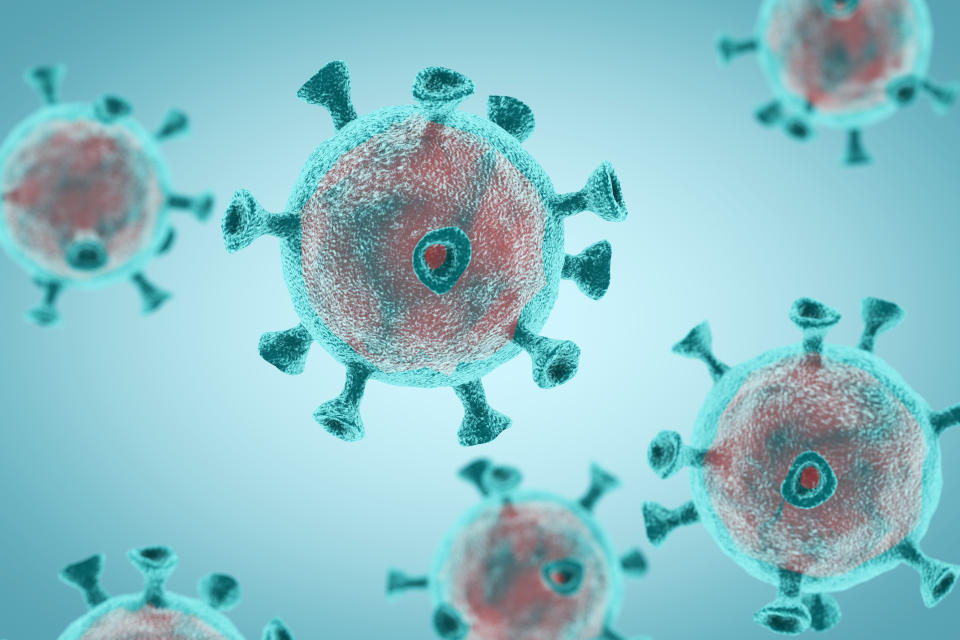Long COVID may trigger chilblains, scaly plaques and black crusts on toes, study suggests

Long COVID patients may be enduring dermatological symptoms, research suggests.
It is increasingly coming to light that not everyone who overcomes the coronavirus returns to a clean bill of health, with some facing complications after they test negative for the infection.
Dubbed “long COVID”, these patients are enduring everything from fatigue and palpitations to breathlessness and even signs of organ damage.
Early in the outbreak, experts warned the coronavirus may trigger skin-related symptoms like rashes, hives and chilblains.
Read more: Coronavirus patients over 65 in the UK can test experimental drugs at home
After looking at nearly 1,000 patients with these skin issues, scientists from Massachusetts General Hospital have reported how one individual continued to endure scaly plaques 70 days after testing positive for the infection.
Six of the patients with chilblains were still suffering 60 days later, while two with “COVID toes” experienced the small spots of blood and “blackish crusts” for more than 130 days.
Watch: What is long COVID?
“Our findings reveal a previously unreported subset of patients with long-standing skin symptoms from COVID-19, in particular those with COVID toes,” said study author Dr Esther Freeman.
“This data adds to our knowledge about the long-term effects of COVID-19 in different organ systems.
“The skin is potentially a visible window into inflammation that could be going on in the body.”
With the coronavirus only identified at the end of 2019, long COVID is a relatively mysterious phenomenon.
A team from King’s College London has estimated up to half a million Britons may be affected, with medics somewhat in the dark about how best to treat the little-known condition.
To better understand long COVID’s symptoms, the Massachusetts scientists created an international registry for coronavirus skin manifestations in April.
Read more: Death rates halved among COVID patients in England in three months
Doctors were contacted in June and August to update their patients’ coronavirus test results and the duration of any skin symptoms.
The scientists defined a “long hauler” as anyone with coronavirus-related skin symptoms that persisted for at least 60 days.
According to the World Health Organization, most coronavirus patients recover from severe symptoms within two to six weeks.
Patients enduring complications beyond this time are therefore generally considered to have long COVID, however, this definition has varied.
The King’s team has reported one in 20 former coronavirus patients endure complications for at least eight weeks, while one in seven is ill for at least four weeks and one in 45 for at least 12 weeks.

After looking at almost 1,000 coronavirus patients with skin symptoms, the Massachusetts scientists found most endured the complications for around 12 days.
Results – presented at the 29th congress of the European Academy of Dermatology and Venereology –– also revealed any measles-like rashes and skin weals typically resolved within a week, with all cases clearing up after 28 days.
Scaly plaques stuck around for an average of 20 days, however, one patient endured the unpleasant symptom for 70 days.
Chilblains and hand and feet swelling typically both lasted for around two weeks, however, six patients were enduring the symptoms 60 days after testing positive.
Read more: 14% of all UK coronavirus deaths linked to air pollution
The scientists also looked at COVID toes, which occur when small spots of blood and “blackish crusts” appear in sores on the feet.
Two patients still had COVID toes 130 days after testing positive for the coronavirus.
“We encourage clinicians taking care of patients with COVID-19 to ask about and evaluate any skin symptoms,” said Dr Freeman.
“Healthcare providers can enter information into our registry to further our understanding of the dermatologic effects of COVID-19.”
Medics have complained a lack of understanding over long COVID’s prevalence and cause makes treating patients tricky.
It has been suggested the immune response triggered by the coronavirus may lead to lasting inflammation that can theoretically affect any part of the body.
The coronavirus may also linger in pockets of the body after it has been cleared from the airways.
To learn more, NHS England and NHS Improvement have commissioned the National Institute for Health and Clinical Care Excellence (Nice) – a health watchdog – to develop a treatment guideline for long COVID, due by the end of 2020.
The NHS also recently announced a £10m ($13m) package to run designated long COVID clinics in every area of England.
Patients awaiting treatment are advised to rest as much as they can and pace themselves throughout the day.
Watch: Can you catch coronavirus twice?



